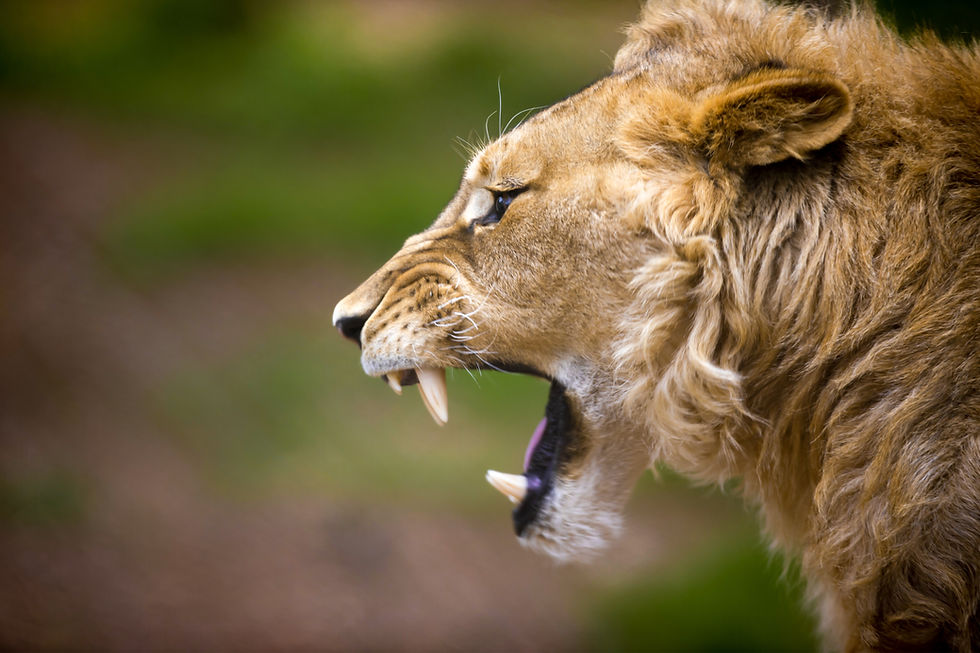Ancient Wild Predators - Eurasian Lion
- Sylvia Rose

- Oct 31, 2023
- 4 min read
Updated: May 26, 2024
The Eurasian Lion or European Lion features in the art and tales of ancient Greece and Mesopotamia. The lion is a symbol of strength, courage, ferocity and wild nature. Mythologies and cities build up around the adventures of heroes and lions.
See also:

Lion fossils date back 600,000 years. Modern lions (Panthera leo) inhabit parts of Southern Europe from c. 9700 BCE until their extinction about ten thousand years later. Lions dwell in family groups or prides of a few adult males, related females and cubs.
Groups of female lions usually hunt together, using strategy to capture a meal. They prey mostly on large herbivores. The lion is an apex and keystone predator. Some opportunistic lions scavenge when they have the chance. Some lions have been known to hunt humans, though it's not common.
See also:
Lions of the past were bigger, with less specialized teeth than current lions. The manes of Balkan lions were less developed than other types while the south Caucasian lion has a full mane.
In ancient Greek mythology lions figure prominently, such the Nemean lion. This supernatural creature lived in the sacred town Nemea in the Peloponnese, where Herakles come to slay him.
The Nemean lion has a golden fur which can't be pierced. His claws are shaper than swords and can rip through armor. After some struggles, Herakles hits the lion on the head with his club and strangles it with his bare hands. As a result he's often seen in pictures wearing a lion skin. The lion is placed in the sky as the constellation Leo.
See also:
In another story Phalaecus, a tyrant of Amvrakia (modern Arta), was reportedly killed by a lioness because he handled a newborn cub. He found it when on a lion hunting expedition. Phalaecus was a provincial ruler who, ousted from his political post, became the leader of a mercenary band instead.
The city of Olynthus in central Macedonia gets its name because during the Trojan War its namesake is killed by a lion during a lion hunt. Olynthos is either the son of Herakles or the River God Strymon. Either way doesn't save him from his ultimate fate.
See also:
When Xerxes of Persia advanced near Echedorus in Greece 480 BCE, the camels of his troops were attacked by lions. About a hundred years later, Aristotle describes lions and records data about lion distribution, behavior, breeding and anatomy.
Lion cubs are weaned at about six months. Females might stay with pride for life, and the males usually go off on their own or join young bachelor groups who hunt together. Male cubs stay with mom for about two years.
In the 4th century BCE, Aristotle records lions as more numerous in North Africa than Europe. According to Aristotle they approach towns and attack people only if they are old, or have bad teeth.
See also:
In Egypt, Mesopotamia and other regions, the mythical creature the Sphinx has the head of a person, wings of an eagle and body and tail of a lion. Sometimes its tail is the head of a snake.
The Sphinx is associated with the royalty, status and the Sun, as its animal parts, human, snake, eagle and lion, all relate to the sun. The Sun is one of the first elemental entities recognized and worshipped in prehistory.
See also:
The Eurasian or European Lion slowly goes extinct. It disappears from the Balkans and other areas from c. 1000 BCE. Around 1000 CE the lion is gone. By this time the animals have been used for Roman and other entertainments and lion hunting takes its toll.
Human population spread depletes habitat space. As well, the climate begins to cool down after a period of balmier weather. Lions survive in the Caucasius until the end of the first millenium CE. They live in the legends and lore of the land forever.
See also:







